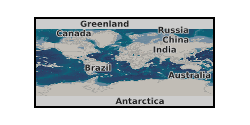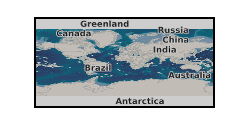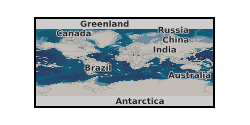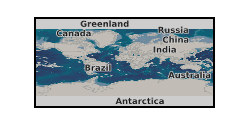Convection
Type of resources
Topics
Keywords
Contact for the resource
Provided by
Years
Formats
Representation types
Update frequencies
-
This dataset contains the input data (initial conditions, boundary conditions, initial perturbations) for Met Office Unified Model simulations performed during the PRESTO (PREcipitation STructures over Orography) project. It also contains the 2D and 3D output files from these simulations. The PRESTO project was funded by the Natural Environment Research Council (NERC) with the grant references - NE/I024984/1 and NE/I026545/1 - led by Professor Suzanne Gray (University of Reading) and Professor David Schultz (University of Manchester). PRESTO provided a leap forward in the understanding and prediction of quasi-stationary orographic convection in the UK and beyond. This was achieved through an intensive climatological analysis over several regions of the globe where continuous radar data was available, which identified the environmental conditions that support the bands and their characteristic locations and morphologies. Complementary high-resolution numerical simulations pinpointed the underlying mechanisms behind the bands and their predictability in numerical weather prediction models. This work provides positive impacts for the forecasting community, general public, and other academics in the field. Forecasters benefit from the identification of simple diagnostics that can be used operationally to predict these events based on available model forecasts and/or upstream soundings. A series of activities were used to directly engage with forecasters to effectively disseminate our findings. The public benefit from this improved forecasting of potentially hazardous precipitation events. The academic community benefit from the advanced physical understanding (which was disseminated through conferences, workshops, and peer-reviewed publications) and the numerous international collaborations associated with this project.
-

Data extracted from numerical simulations of rotating Boussinesq convection in spherical geometry and published in Guervilly, Cardin & Schaeffer (2019, https://doi.org/10.1038/s41586-019-1301-5). The simulations were run with Ekman numbers varying between 1e-6 and 1e-11, Rayleigh numbers between 6e7 and 5.25e13 and Prandtl numbers between 0.1 and 0.01. The data include: power spectra of the kinetic energy as a function of the azimuthal wavenumber; Rossby numbers and convective length scale; radial velocity in the equatorial plane for 4 selected simulations at varying Ekman number (Ek=1e-8 to 1e-11).
-

Data extracted from simulations of Boussinesq convection in a rotating plane layer where the horizontal box sizes are unequal (Lx < Ly where the xy plane is horizontal). Data published in Guervilly & Hughes, 2017, Phys. Rev. Fluids 2, 113503 (DOI: 10.1103/PhysRevFluids.2.113503).
-

Data extracted from simulations of rapidly-rotating Boussinesq convection driven by internal heating in a full sphere and published in Guervilly & Cardin, 2017, Geophys. J. Int. 211, 455-471 (DOI:10.1093/gji/ggx315). The simulations were run for Ekman numbers of 1e-7 and 1e-8 and Prandtl numbers of 0.1 and 0.01. The data consist of tables of input and output parameters (Reynolds number of the convective and zonal flows, convective lengthscale and Rhines scale).
-
This dataset contains the input data (initial conditions, boundary conditions, initial perturbations) for Met Office Unified Model simulations performed during the PRESTO (PREcipitation STructures over Orography) project. It also contains the 2D and 3D output files from these simulations. The PRESTO project was funded by the Natural Environment Research Council (NERC) with the grant references - NE/I024984/1 and NE/I026545/1 - led by Professor Suzanne Gray (University of Reading) and Professor David Schultz (University of Manchester). PRESTO provided a leap forward in the understanding and prediction of quasi-stationary orographic convection in the UK and beyond. This was achieved through an intensive climatological analysis over several regions of the globe where continuous radar data was available, which identified the environmental conditions that support the bands and their characteristic locations and morphologies. Complementary high-resolution numerical simulations pinpointed the underlying mechanisms behind the bands and their predictability in numerical weather prediction models. This work provides positive impacts for the forecasting community, general public, and other academics in the field. Forecasters benefit from the identification of simple diagnostics that can be used operationally to predict these events based on available model forecasts and/or upstream soundings. A series of activities were used to directly engage with forecasters to effectively disseminate our findings. The public benefit from this improved forecasting of potentially hazardous precipitation events. The academic community benefit from the advanced physical understanding (which was disseminated through conferences, workshops, and peer-reviewed publications) and the numerous international collaborations associated with this project.
-

Data on the average aspect ratio (length/width) and average length of plagioclase grains in dykes and sills, used to demonstrate that the solidification regime is a function of the orientation of tabular intrusions. The data are written up, with publication expected in Journal of Petrology.
 NERC Data Catalogue Service
NERC Data Catalogue Service